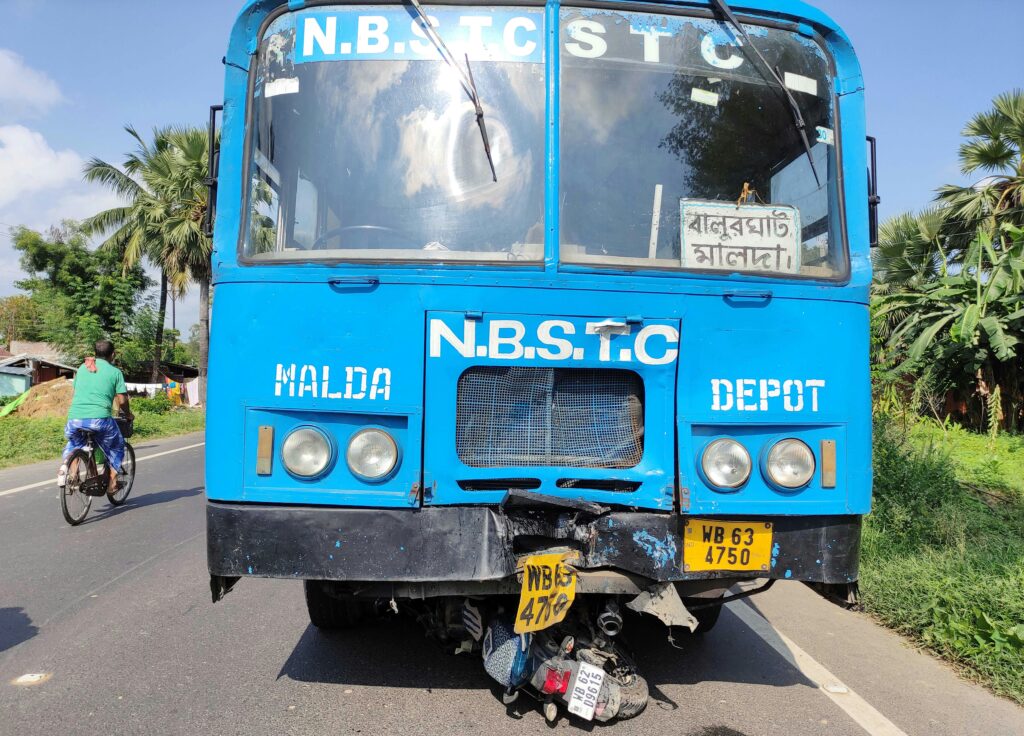states in india will fail to reach the target of halving road deaths by 2030 : india status report on road safety 2024

New Delhi, 31 August 2024 – The Transportation Research and Injury Prevention (TRIP) Centre at the Indian Institute of Technology Delhi has released its latest report, “India Status Report on Road Safety: 2024,” shedding light on the critical public health challenge posed by road traffic injuries in the country. The report underscores the grim reality that, despite progress in other health sectors, road safety remains a significant burden with little improvement in outcomes.
In 2022 alone, India recorded 1,68,491 road fatalities, highlighting the scale of the crisis. The report indicates that if current trends persist, most states will fail to meet the United Nations Decade of Action for Road Safety 2021–2030 target of halving road deaths by 2030.
Pedestrian Deaths are highest in Delhi, making up 44% of road fatalities while cyclists account for 3% of road traffic deaths in Haryana, Delhi, and Maharashtra.
The report provides a comprehensive review of road safety in India, analyzing data from First Information Reports (FIRs) across six key states—Chhattisgarh, Chandigarh, Delhi, Haryana, Maharashtra, and Uttarakhand. The findings reveal significant disparities in road safety performance across the country, with states like Tamil Nadu, Telangana, and Chhattisgarh recording death rates more than double the national average.
In contrast, states such as Punjab, Karnataka, Rajasthan, West Bengal, and Gujarat have observed reductions in road traffic deaths.

Motorcyclists are identified as the most vulnerable road users, facing significantly higher risks across the country. In contrast, occupants of four-wheeled vehicles, though less likely to die, are often involved in fatal crashes, with trucks being the leading impacting vehicles in most cases.
The report also highlights the need for tailored safety interventions based on state-specific risk factors. State-level data showed large variations in the types of victims injured, impacting vehicles, and common crash configurations. However, the report stresses that India’s lack of a reliable crash surveillance system hampers the effectiveness of safety programs.
To address this, it recommends establishing state-level units to systematically collect and analyze data on fatal crashes, combining information from police reports, hospitals, and road-owning agencies.
Since 2015, states have made varying progress in complying with the Supreme Court Committee for Road Safety’s directives. While most states have established lead agencies for road safety and notified road safety policies, significant gaps remain in areas such as infrastructure audits, enforcement of helmet use, and the establishment of adequate trauma care facilities.
The report calls for an urgent scale-up of road safety interventions at both the state and federal levels. It emphasizes the importance of establishing comprehensive governance frameworks, understanding the unique road safety challenges across diverse settings, and committing substantial resources to research and development in this critical area.
States in India have made varying progress in complying with the directives issued by the Supreme Court Committee for Road Safety since 2015.
- Institutional Arrangements: Most states have established lead agencies, typically led by the transport commissioner, but many lack technical staff and dedicated funding. All states have notified road safety policies.
- Infrastructure: While over half of the national highways have been audited in eight states, few states have audited more than half of their state highways. Many have not conducted or reported road audits, and traffic calming measures remain largely unimplemented.
- Enforcement: Most states are using the iRAD/eDAR system for recording traffic data, but helmet use is low, especially in rural areas. Only 7 states have helmet use rates above 50%.
- Education: The education department of most states reported including a module on road safety in the school curricula.
- Medical Care: Most states have not yet established trauma care facilities adequate to the scale of the problem.
About TRIP Centre
The TRIP Centre at IIT Delhi, operational for over two decades and established as a Centre in 2021, focuses on reducing the adverse health effects of road transport. The Centre integrates issues related to transportation safety, active mobility, cleaner air, and energy conservation. The TRIP Centre is actively involved in planning safer transportation systems, developing vehicle designs and safety equipment, and conducting applied research, special courses, and workshops.
Share Your Urban Stories! Have insights on urban challenges or solutions? Submit your press releases on urban issues to urbanvoicesin@gmail.com. Let your voice shape the conversation and inspire change in our cities.
